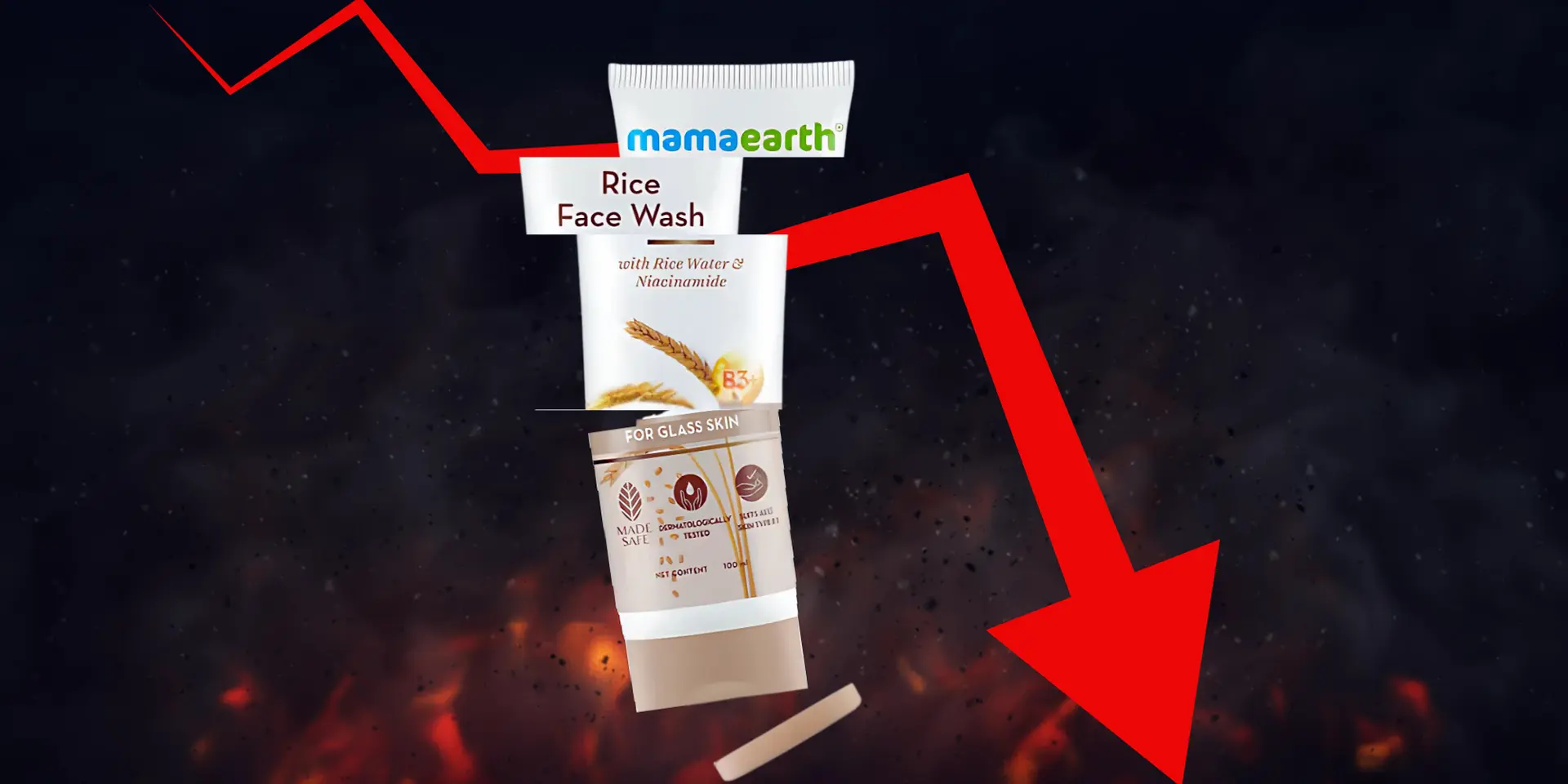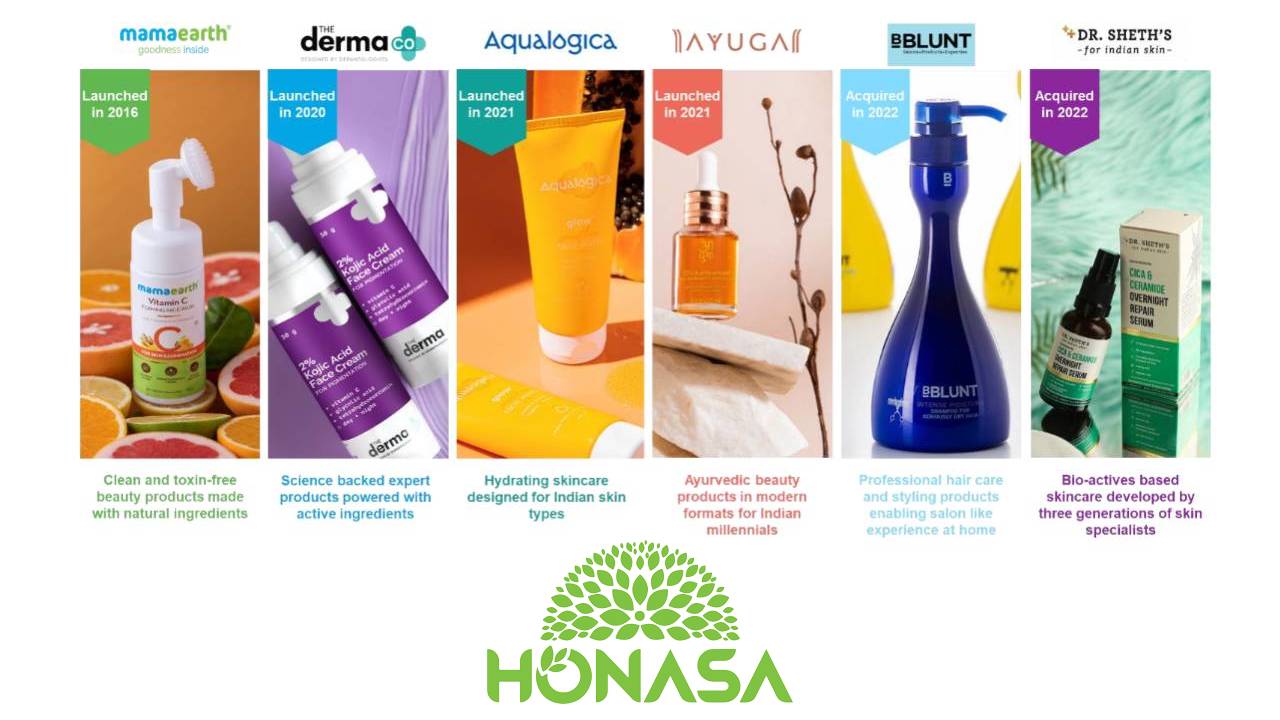Business
Mamaearth, From Dizzying Heights to Grounded Reality. What’s Going Wrong For Once India’s Favorite Beauty Brand?
Published
8 months agoon

Mamaearth, once a game-changer in India’s beauty and personal care scene, with many Indian women swearing by its products, is now facing serious hurdles. Recently, the brand and its parent company, Honasa Consumer, reported a ₹19 crore loss for the September 2024 quarter—a stark contrast to the ₹40 crore profit reported just the quarter before.
Adding to the woes, the company’s stock took a nosedive, losing a massive 40% of its value. Investors are clearly worried about where the financials and stock are headed, anticipating more losses could be on the horizon in the coming days.
On top of that, Honasa has lost its unicorn status (though that might be temporary) and, more crucially, some of the trust of its distributors and customers.
The Strong Foundation
Mamaearth started with a strong digital-first approach, tapping into platforms like Amazon and Flipkart to reach India’s growing online consumer base. This direct-to-consumer (D2C) strategy allowed the brand to establish a solid online presence without the expenses of traditional retail.
But as the online beauty market got more crowded, Mamaearth decided to explore offline retail for growth.
By 2024, about 35% of Mamaearth’s sales came from physical stores. While this move helped expand their reach, it also brought unfortunatly, a new set of challenges like managing logistics, inventory, and relationships with distributors.
Managing Distribution Issues And Inventory Headaches
Mamaearth’s initial strategy involved teaming up with super-stockists—large distributors who handled the supply to smaller retailers across India. This approach helped the brand expand quickly, but it also meant that Mamaearth didn’t have clear visibility on real-time sales, leading to overstocking and unsold products.
Reports from the All India Consumer Products Distributors Federation revealed that over 2,000 distributors were stuck with unsold inventory, including products close to expiration.
In an effort to regain control, Mamaearth launched “Project Neev” to replace super-stockists with direct distributors in key cities, allowing them to monitor sales and inventory more closely.
Unfortunately, the transition didn’t go smoothly, and the result was even more unsold stock, culminating in a ₹63 crore write-off of expired products. This hefty loss not only dented the company’s finances but also putforth the struggles in demand forecasting and inventory management.

The Story Of Unsold Stocks
Eventhough Project Neev was founded to address critical issues it eneded up sparking frustration among distributors. They claim the company flooded them with inventory worth hundreds of crores, only for it to be returned by retailers.
Reports suggest over ₹300 crore worth of stock is gathering dust in various warehouses, although Mamaearth has denied these allegations.
Here is what Dhairyashil Patil, national president of the All India Consumer Products Distributors Federation (AICPDF) had to say,
“We’ve been warning Mamaearth about this inventory buildup since their IPO. This year, we’ve seen a sharp rise in returns due to damaged goods and expired products that have been sitting with us for months. We work on a credit system with retailers, meaning we only get paid when consumers buy the stock”.
Adding more to the chaos, retailers have also pointed out that demand for Mamaearth products has slowed, with returns flooding in. Honasa supposedly owes ₹50 crore to distributors in the ACPDF, according to Patil.
Another fact that has come to bite Mamaearth is that Honasa hasn’t kept up with rapidly changing customer preferences over the past year, particularly the rising demand for Korean skincare and celebrity-backed makeup brands.
“We usually keep BPC products on our shelves for 2-3 months to gauge interest. Earlier, Mamaearth’s baby products, shampoos, and sunscreens were popular, but now customers, especially younger ones, are asking for Korean skincare, products with active ingredients, or even imports from the UAE, South Korea, or Turkey, where prices are more competitive and the products have global appeal,” the retailer shared.
So what is really happening with the brand?
Honasa, the parent company behind Mamaearth, seemed to be on top of its game. In FY24, it became one of the few D2C startups in India to hit the INR 2,000 crore revenue mark, signaling that Mamaearth had found its profitability formula.
However, things quickly took a turn for the worse. By the end of the first six months of FY25 (April to September), the company saw a 7% decline in revenue year-on-year, and it slipped into losses.
From a high to a low in just six months, the shift was sharp, and now brokerages are advising investors to “Sell” Mamaearth stock, a far cry from the optimism of just months ago.
While a slowdown in consumer spending has affected many retail giants, including Mamaearth’s competitors like Unilever and ITC, the issues Honasa faces go beyond just the industry-wide downturn.
Cofounder and CEO Varun Alagh explained in a recent analyst call that the company didn’t foresee the significant impact on margins from its revamped offline distribution strategy, “Project Neev,” launched in November 2023.
The shift from super-stockists to direct distributors was meant to eliminate a major cost and help the company move towards profitability, but the change—adopted across all Honasa markets—ended up hurting the company’s financials.
More Ambiguity
The CEO also acknowledged that these changes had a negative effect on Mamaearth’s brand equity and growth. “Our assumptions haven’t aligned with reality,” Alagh said. “The model we’re trying to execute is very similar to what worked for the brand in the past. However, we’ve realized there are a few key adjustments we need to make, particularly in terms of product mix and SKU sizing.”
Alagh also pointed out that the company needs to be more strategic in its approach, focusing on a few key categories instead of spreading too thin across too many. “We’ve learned that we’ve gone too wide, and now we need to focus on a few categories and really dive deep with our hero SKUs,” he shared with analysts.
Mamaearth remains the flagship brand of Honasa, contributing the majority of the company’s revenue in FY24. Over 65% of Honasa’s revenue still comes from online sales. Fast forward to Q2 FY25, and Honasa’s investor presentation revealed, “Mamaearth is growing slower than expected, and we are making structural changes to get it back on track in the next few quarters.”

At The Core…
Honasa’s investor presentation illustrated a key shift in consumer behavior—moving from family-oriented purchases to more individual-led buying, driven by new channels. One such channel is quick commerce, which has been changing the retail distribution game in metros and Tier 1 cities.
The company also pointed to the rise of new categories led by influencers, creating trends and driving experimentation in ways that brands can’t afford to ignore.
However, industry experts are sounding the alarm about some troubling signs. Slow demand, difficulties in building customer loyalty, and struggling to secure repeat orders are major red flags for Honasa. One crucial metric to keep an eye on is the customer acquisition cost (CAC), which has been steadily rising for the company.
In Q2 FY25, Honasa spent INR 183 crore on advertising, nearly 40% of its INR 462 crore revenue. Overall, marketing expenses for H1 FY25 increased to INR 383 crore, up from INR 336 crore in H1 FY24.
Infact it was noted that Honasa’s aggressive marketing spend has outpaced every competitor, and without these heavy spends, their revenue would likely be even lower. “This is much higher than the industry standard, where brands typically allocate around 20% of total revenue to brand building and marketing”.
This heavy marketing investment also seems to be pointing to a larger problem—Mamaearth and other Honasa brands are struggling to build a loyal customer base. “Higher CAC means repeat orders are slowing down. Repeat customers usually have a lower CAC, and this could be one of the reasons why Mamaearth is facing growth challenges,” a digital marketing analyst explained.
Slow On Innovation
Honasa’s innovation team, led by cofounder Ghazal Alagh, is responsible for everything from formulation and clinical trials to packaging, pricing, and positioning across its range of brands—Mamaearth, The Derma Co, Aqualogica, Dr. Sheth’s, Bblunt, Ayuga, and STAZE.
Despite being a pioneer in the market, Honasa has recognized that the demand for active ingredient-based products is on the rise, and Mamaearth’s product portfolio may not be keeping pace.
In 2023, the company launched a staggering 122 new products, with multiple size SKUs, which some analysts believe may have diluted the brand.
In a recent investor call, Alagh acknowledged that the company had spread itself too thin across too many categories. “We realized we were spreading our investments across 10 different categories, which resulted in our hero SKUs and key categories getting less attention,” she admitted.

Q Commerce A Slippery Slope
The rapid rise of quick commerce in India has introduced increased visibility for newer D2C brands and Honasa has noted that this shift in shopping behavior and distribution could be a game-changer.
However, brands that once thrived with Mamaearth’s marketplace formula now find themselves in a battle for visibility on quick commerce platforms, where competition for shelf space in “dark stores” is fierce. For larger D2C brands, getting new SKUs into these stores isn’t easy, and marketing costs are only rising.
Thus while Honasa made history as the first D2C house of brands to go public, the market has changed dramatically in the past two years. The company now faces the challenge of adapting to the quick commerce wave, adjusting strategies for both online and offline channels, and winning back the trust of consumers and distributors alike.
The Last Bit
Honasa’s journey with Mamaearth, once a shining example of success in India’s beauty and personal care sector, has definatley hit a rough patch.
The company did capitalize on the D2C model and made significant strides with multiple brand acquisitions, however, recent missteps—including product dilution, rising customer acquisition costs, and a struggle to adapt to the changing dynamics of retail and quick commerce—have led to a sharp decline in its financial performance.
Additionally, the transition to a new distribution model and aggressive expansion has stretched the company too thin, while evolving consumer preferences and competition from newer brands have created more challenges.
Now, Honasa must recalibrate its strategy, streamline its focus on core product categories, and rethink its marketing and distribution approach.
If it can regain the trust of both its customers and distributors and adapt quickly to the rapid shifts in the beauty industry, there may still be hope for a comeback. However, with increased competition and evolving market trends, only time will tell if the company can return to profitability and reclaim its place at the top.
